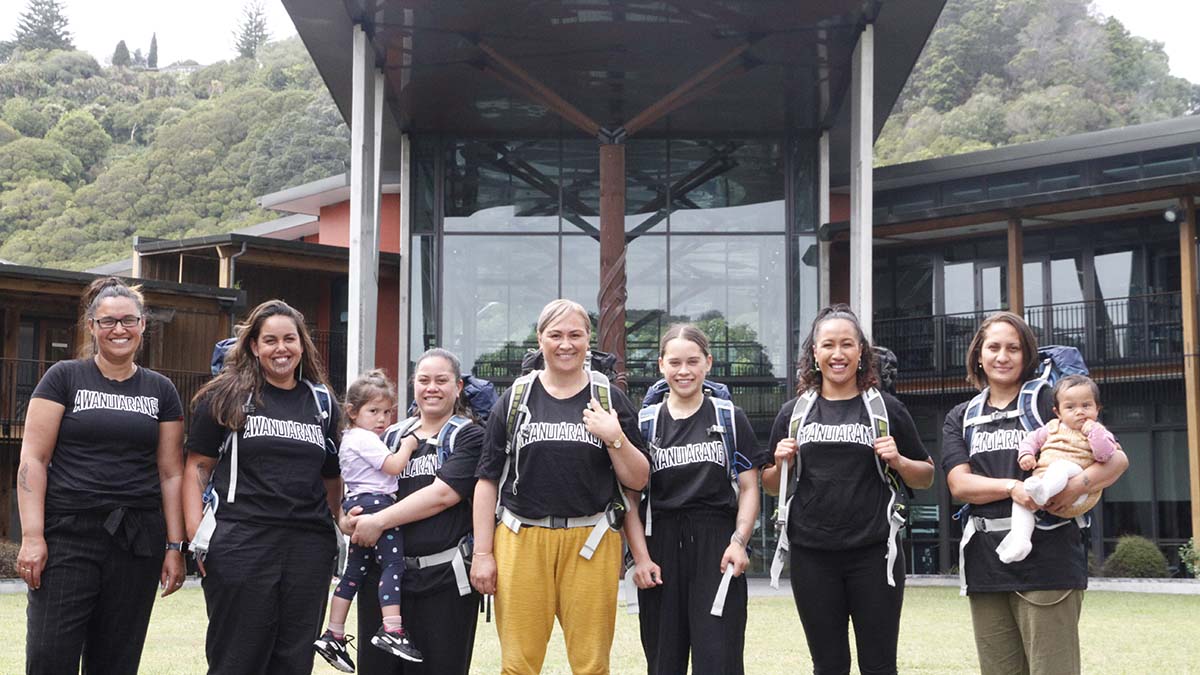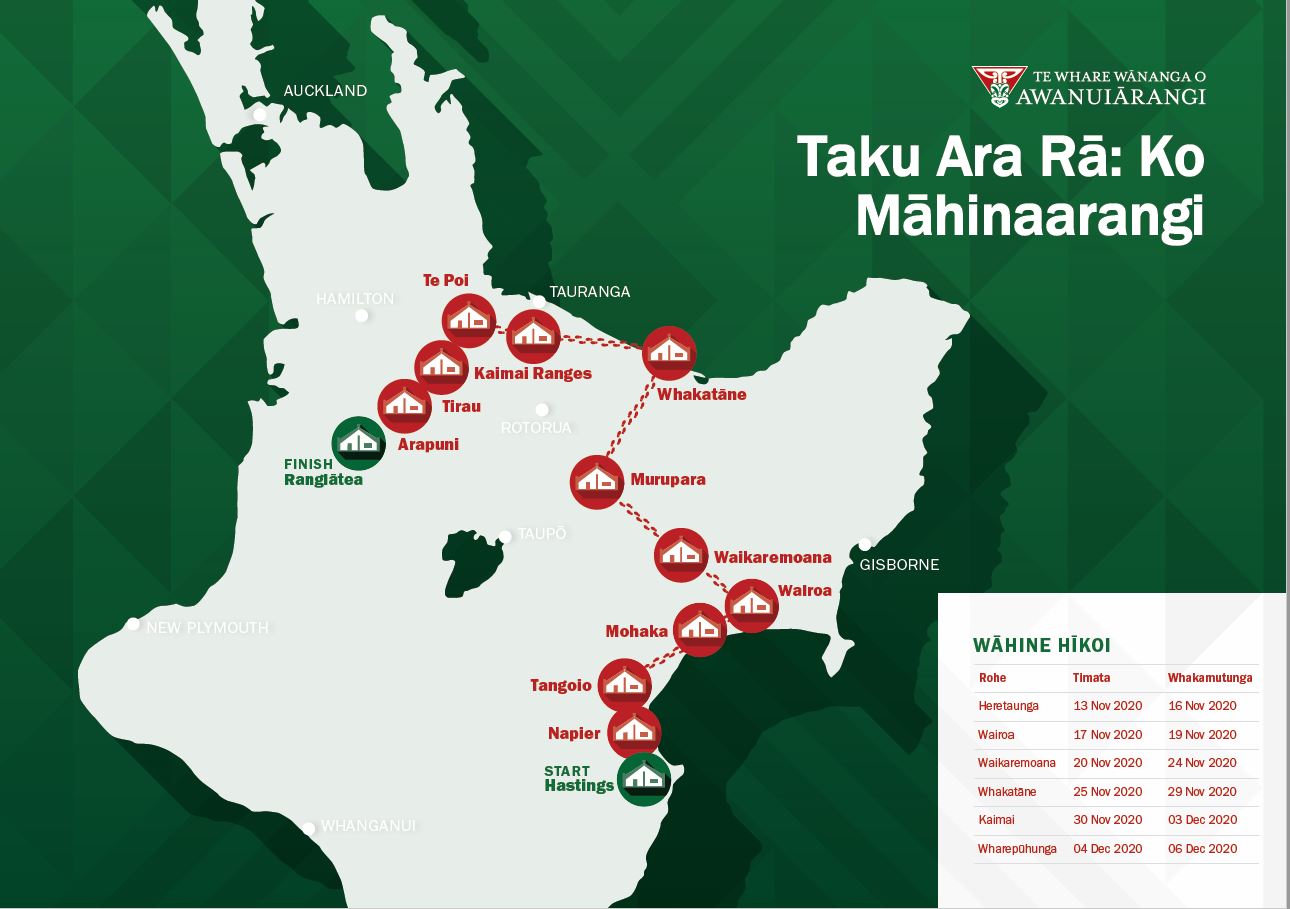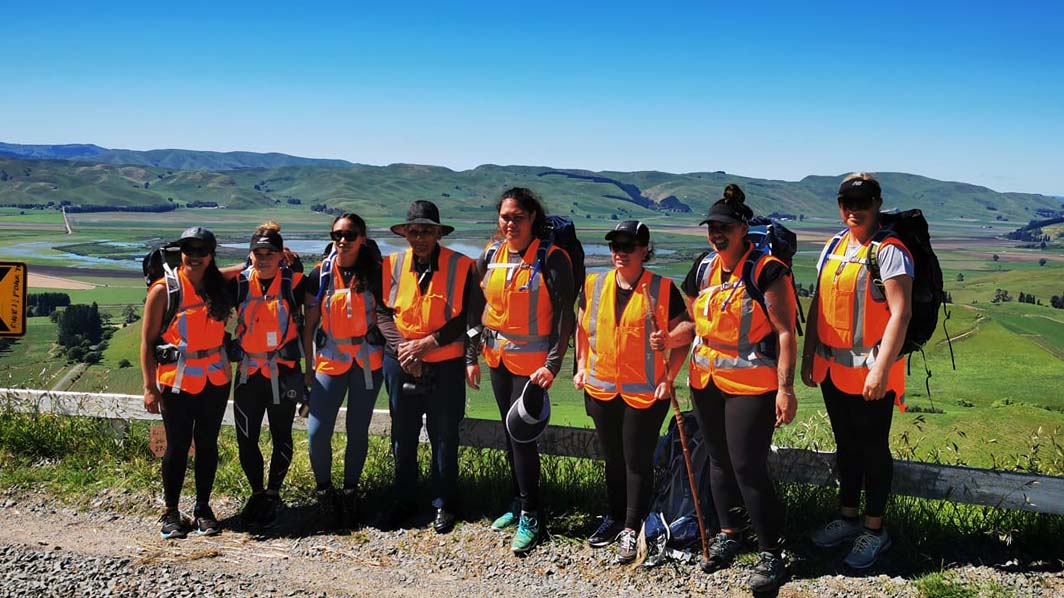Taku Ara Rā, ko Māhinaarangi: Walking in her footsteps 2020
A group of seven wāhine have embarked on a three-week hīkoi across the North Island to retrace the journey of the ancestress Māhinaarangi, and reconnect with their tribal stories, knowledge, lands, lakes and rivers along the way.
The hīkoi is part of a Marsden-funded research project — Taku Ara Rā: Ko Māhinaarangi — led by Dr Naomi Simmonds (Raukawa), Senior Lecturer and Researcher at Te Whare Wānanga o Awanuiārangi.
“It is our hope that by reconnecting to the lands, environment, and knowledge of our tūpuna through indigenous research methods — like pūrākau and hīkoi — we can discover positive pathways for the descendants of our tūpuna Māhinaarangi in Aotearoa today,” says Dr Simmonds.
Joining Dr Simmonds on the hīkoi are six other Raukawa women: Ngahuia Kopa; Lisa Begbie, and her daughters Tyra Begbie and Klee Begbie; Arahia Moeke; and Kyea Watene-Hakaraia.
The 400-kilometre walking journey goes from Te Hauke region in Hastings, through to Wairoa, Waikaremoana, and across the Mamaku and Kaimai Ranges, staying at marae along the way. The wāhine hope to arrive at Rangiātea Pā site on the banks of the Mangaorongo river just out of Otorohanga on Sunday 6 December.
Together they will trace the journey of Māhinaarangi of Ngāti Kahungunu who is renowned for having travelled, while heavily pregnant, more than 500 kilometres from her people’s lands in Kahungunu (near Te Aute in the East) to those of her husband, Tūrongo, at Rangiātea. On the way, she laboured and birthed their son, Raukawa, who the women’s tribe is named after.

Left to right: Hannah Simmonds (research assistant and logistics coordinator), Dr Naomi Simmonds, Arahia Moeke, Lisa Begbie, KLee Begbie, Ngahuia Kopa, and Maureen Mitai. Absent: Tyra Begbie and Kyea Watene-Hakaraia.
Mahere Hikoi - Map

Map overview of the hikoi the team are embarking on, following in the footsteps of their tupuna, Māhinaarangi
